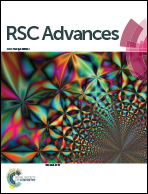Microwave regeneration of phenol-loaded activated carbons obtained from Arundo donax and waste fiberboard
Abstract
A study was performed for the microwave regeneration of Arundo donax activated carbon (ADAC) and waste fiberboard activated carbon (WFAC) loaded with phenol. The regeneration of spent activated carbon (AC) under microwave irradiation was investigated. The optimum conditions of regeneration were microwave power 800 W, microwave irradiation time 7 min for 0.1 g AC. When phenol solution was treated under the optimal conditions, two activated carbons (ACs) behaved differently during ten successive adsorption–regeneration cycles. The phenol adsorption for regenerated WFAC was not as significantly reduced after nine cycles of adsorption–regeneration in comparison to regenerated ADAC. The structural properties of fresh and regenerated ADAC and WFAC were characterized by scanning electronic microscopy (SEM), Raman spectra and N2 adsorption isotherms. After one adsorption–regeneration cycle, the surface area of the regenerated ADAC and WFAC were 1554 and 1833 m2 g−1, respectively, corresponding to 91.47% of original ADAC (1688 m2 g−1) and 95.07% of original WFAC (1928 m2 g−1), respectively. After ten adsorption–regeneration cycles, the surface area of regenerated ADAC and WFAC were equivalent to 34.74% of fresh ADAC and 47.80% of the fresh WFAC, respectively.


 Please wait while we load your content...
Please wait while we load your content...